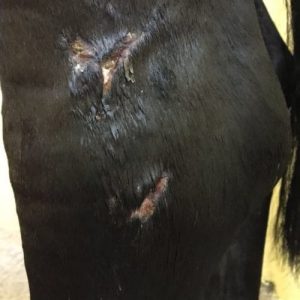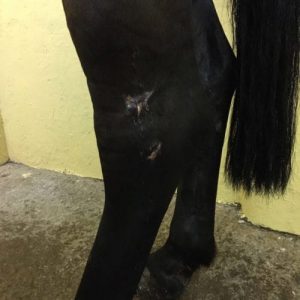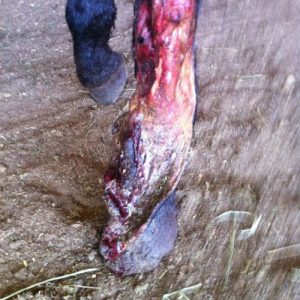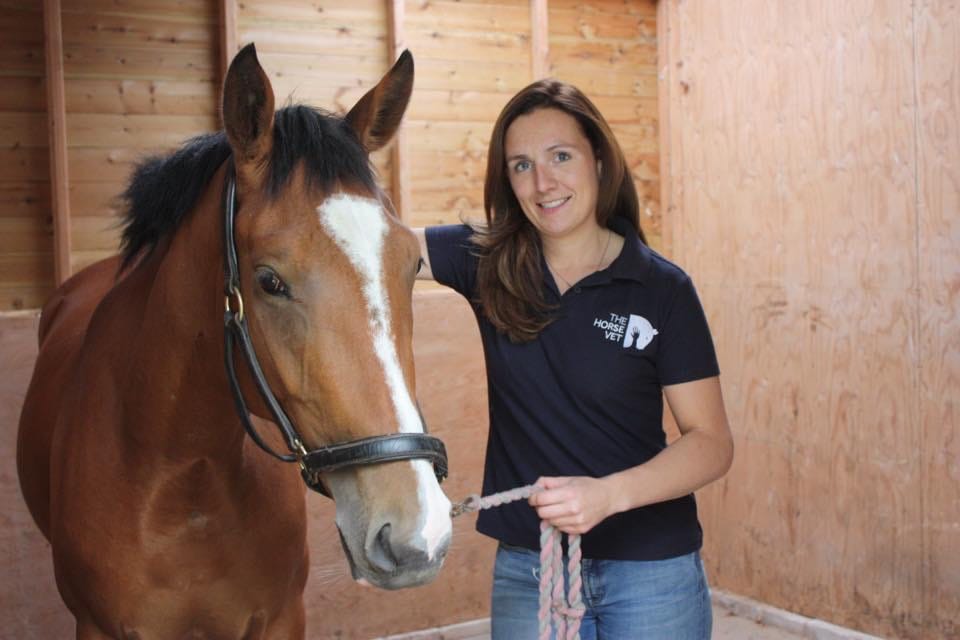Latest Blogs
Treating Equine Wounds by Dr Charlotte Inness BVSC MRCVS
All of us that own horses know how easily they can sustain injury. I have often been called to a yard where the owners have arrived to bring their horse or pony in from a paddock to find an unexplained injury. For horse owners this is not only worrying but can bring disastrous consequences; long layoffs, months of box rest and in extreme cases these can be life threatening.
Many injuries can be easily remedied and keeping some basic items in your equine first aid cabinet can be money well spent. Always ensure that your horse has an up to date Tetanus.
An equine first aid kit should include:
- Non-adhesive Gauze/dressings
- Elasticated Cohesive Bandages
- Poultice material
- Towels for cleaning wounds
- Tape
- Scissors
- Tweezers
- Syringes for flushing
- Vaseline
- Kenospray
- Vet Way Wound Spray
- Vet Way Agri Scrub
- Thermometer
Puncture Wounds
Assess the wound and consider your options. Is this something you can self treat, does it require veterinary treatment and if so, how best to treat the wound until your vet arrives?
If there is considerable and continuous blood loss, the injury will need urgent specialist attention and you should call your vet without delay as it may be a serious arterial injury. If you think the wound may contain a foreign object you should leave this for the vet to attend to and avoid further damaging the tissue.
If the injury doesn’t show any of the above then stop the bleeding with gauze or towels and apply pressure to the wound. If the wound is superficial, flush it gently with saline or water. This will remove any dirt from the wound and help prevent infection. Clean the wound initially with Vet-Cleanse Agri-Scrub (4% Chlorhexidine gluconate) ½ tablespoon diluted in 1 litre. Then continue to use a product such as Vet-cleanse Wound Care Spray on the wound daily paying particular attention to the full depth of wound. Covering a puncture wound with a bandage will encourage the wound to heal from the outside to the inside which can result in a bacterial infection so it’s important to check the wound daily, repeat the cleaning process and remove any scabs that form. Your vet may prescribe a course of antibiotics which will help fight infection.


Lacerations
Lacerations can cause considerable problems if they occur in a joint. Equally, significant blood loss from a laceration may be an indication of something more serious. In both circumstances you should seek the advice of your vet as soon as possible.
If the wound is less serious, apply pressure using a clean towel. Clean the wound with a product such as Vet-Cleanse Wound Care Spray taking care not to damage the outer skin area.
Cover with non-stick gauze and an elastic bandage when possible. To encourage healing after the first 24-48 hours expose the wound to the air but keep it clean and dry to avoid infection.
Always seek veterinary help to determine the correct treatment and assessment.

Abrasions
Check the area that has been skinned to assess the severity of the damage. Check for dirt or small puncture wounds to be certain there is no deeper damage. Skin sensitivity might also be an indication of deeper injury such as broken or chipped bone.
If the wound is superficial, clean it using plenty of water from a yard hose. Rinse the area with diluted Vet-Cleanse Agri-Scrub not only to remove dirt but to kill bacteria. Unless you think the damage is deeper it’s probably not necessary to call your vet but if you have any doubts your vet will be happy to visit or discuss options with you.
The area is likely to swell and be tender but keeping the wound hydrated will reduce swelling and ease the pain. Keep the area moist using a product such as Vet-Cleanse Wound Care Spray and ask your vet for advice on pain relief. Some horse with sensitive skin may have scarring resulting in white hair but this shouldn’t be cause for concern.
You know your horse better than anyone and you are best placed to know when something doesn’t seem right. If you’re unsure always seek the advice and help of a professional veterinary surgeon.
